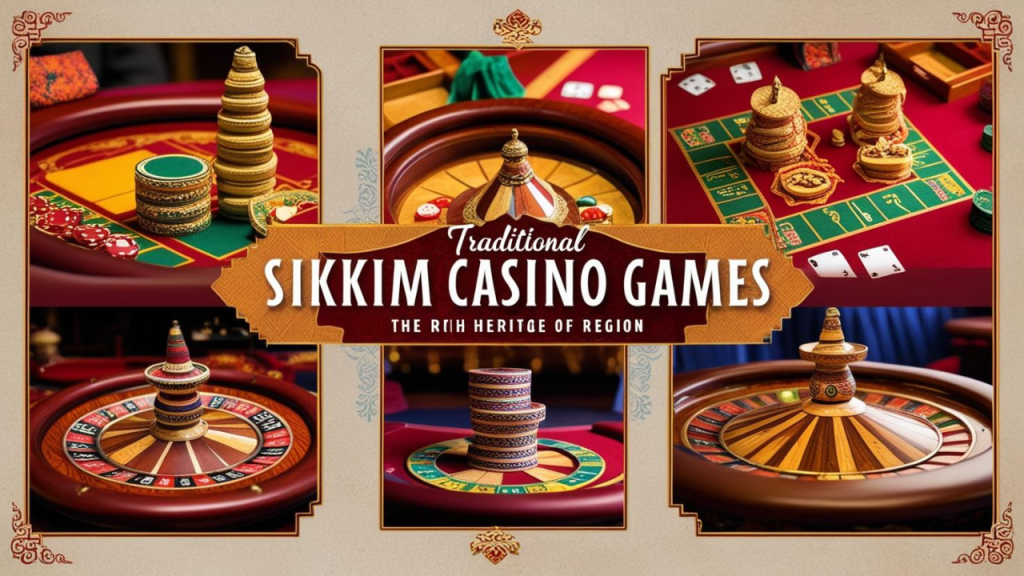Indigenous Sikkim Games enriches its visitors with magnificent beauty and carries an ancient culture full of heritage from the ancient.

Sikkim is the place of the main creators of original games that reflect the practices and beliefs of the various ethnic groups.
Passed from one generation to the next, some of these games are a piece of history, a means of social interaction, and an inseparable part of cultural preservation.
Orange color Despite the mushrooming of video gaming around the world, Sikkim indigenous games have continued to dominate thus offering the curious with a special kind of entertainment coupled with the uniqueness of the region.”
In this article, we analyzed the traditional games of Sikkim, their historical weight, their influence on the modern society, and the necessity of the steps needed to keep the games for the benefited generations.
Traditional Games of Sikkim: A Glimpse into Heritage
Indigenous Sikkim Games are deeply rooted in the customs of its major ethnic groups—the Bhutias, Lepchas, and Nepalis. These games, often played in rural settings, require skill, strategy, and a deep understanding of local traditions.

1. Archery (Da-Bum)
Indigenous Sikkim Games Archery holds a revered place in Sikkimese culture, particularly among the Bhutia and Lepcha communities.
Historically, it was a vital survival skill used for hunting and warfare. Today, it is a competitive sport with organized tournaments attracting participants from different villages. The game demands precision, patience, and a profound connection to nature.
Impact:
Encourages physical fitness and hand-eye coordination.
Strengthens communal bonds as teams compete in local festivals.
Promotes cultural heritage and traditional skills among the youth.
2. Pungdo (Stone Throwing)
Indigenous Sikkim Games A lesser-known yet significant indigenous game, Pungdo is a traditional sport where players aim to throw stones at a target with maximum accuracy.
Indigenous Sikkim Games Played mostly in rural areas, this game fosters a sense of strength, precision, and sportsmanship.
Impact:
Enhances focus and motor skills.
Fosters a competitive spirit while maintaining cultural roots.
Provides an accessible, equipment-free game for all age groups.
3. Bagh Chal (Tiger and Goat Game)
Indigenous Sikkim Games Bagh Chal is a strategic board game native to the Nepali-speaking community in Sikkim.
The game is played with a grid-based board where four tigers attempt to capture twenty goats, while the goats must strategically block the tigers. This game is known for its complexity and the need for tactical thinking.
Impact:
Develops logical thinking and strategic planning skills.
Strengthens social interactions as players engage in mental duels.
Preserves an ancient gaming tradition that dates back centuries.
4. Lungor (Spinning Top Game)
Indigenous Sikkim Games Lungor is a favorite traditional game among Sikkimese children, involving the use of handmade wooden tops.
Indigenous Sikkim Games Players spin their tops using a string and try to keep them spinning longer than their opponents.
Impact:
Improves motor skills and hand-eye coordination.
Keeps children engaged in outdoor physical activity.
Encourages creativity in crafting personalized spinning tops.
The Socio-Cultural and Psychological Impact of Indigenous Sikkim Games
1. Strengthening Cultural Identity
Indigenous games are more than just a pastime; they are a reflection of history, values, and societal structures. These games act as living traditions that connect generations and keep Sikkimese heritage alive.

2. Boosting Mental and Physical Well-Being
Unlike sedentary video games, traditional games involve physical movement, improving both mental agility and physical health. The competitive yet social nature of these games fosters teamwork, strategic thinking, and resilience.
3. Promoting Community Engagement
Festivals and local competitions centered around these games encourage social cohesion. They provide a platform where elders pass down knowledge and skills, strengthening communal ties.
4. Educating the Younger Generation
By incorporating traditional games into educational curriculums, schools in Sikkim can provide students with a deeper appreciation of their cultural roots while also developing essential cognitive and motor skills.
Steps to Preserve Indigenous Games in Sikkim
1. Documentation and Awareness Programs
Many indigenous games are at risk of being forgotten due to modernization. Documenting these games through books, digital content, and research papers can help preserve them for future generations.
2. Organizing State-Level Competitions
Hosting tournaments and festivals featuring traditional games will help revive interest and encourage youth participation.
3. Integration into School Activities
Introducing indigenous games into school sports programs can keep them relevant. Schools should allocate time for traditional games alongside modern sports.
4. Government and Community Support
Local government bodies and cultural organizations should invest in promoting and safeguarding these games through funding, recognition, and media coverage.
5. Digital Adaptation
Creating digital versions of games like Bagh Chal can introduce them to a wider audience, making them accessible beyond Sikkim’s borders while keeping their traditional essence intact.
FAQs
1. Why are indigenous games important in Sikkim?
Indigenous games play a key role in the preservation of cultural heritage and provide a platform for social bonding and a connection to both the mental and physical health of the players.
2. What is the most popular indigenous game in Sikkim?
Archery (Da-Bum) is the most popular ancient game in the area, with tournaments at the village level being attended by big crowds of people.
3. How can the youth of Sikkim be encouraged to play these games?
Creating competitions, developing games as part of school curriculums, and initiating social media campaigns to improve awareness shall be experienced by the new generation.
4. Can indigenous games compete with modern digital gaming?
While digital devices have captured hearts across the globe, primitive games like the indigenous ones still produce the cultural and social interaction which no computer can help to simulate. Developments in the digital age shall help fill in the gap between traditional and game adaptations using newer technologies.
5. What role does the government play in preserving traditional games?
Government support in the form of funds, festivals, and attracting investors through various educational and tourist initiatives is the most effective way of promoting traditional games.
Conclusion
The games of the indigenous population of Sikkim are not only forgotten souvenirs. Instead, they are a real part of the living heritage of the region.
The very social, educational, and community-building activities of these games are of such significance that they remain without a price in the face of the rapidly evolving modern world of today.
Sikkim can guarantee the continuity of its culture and thus strengthen it further by employing the positive way of thinking to show that its old wisdom is still equal to the new ones.
